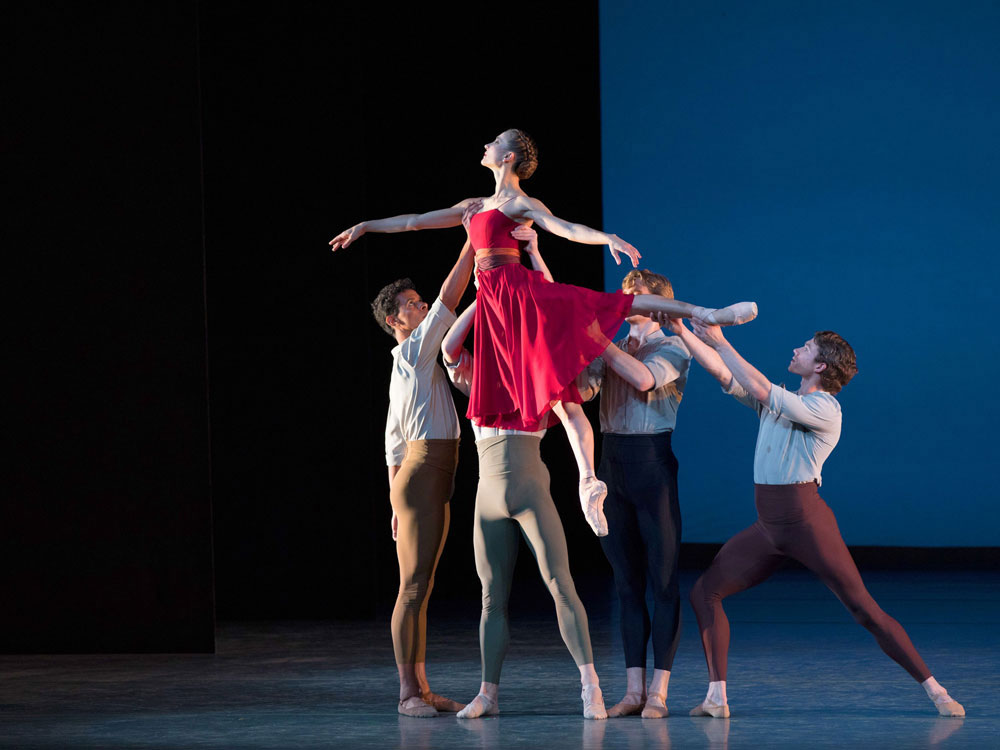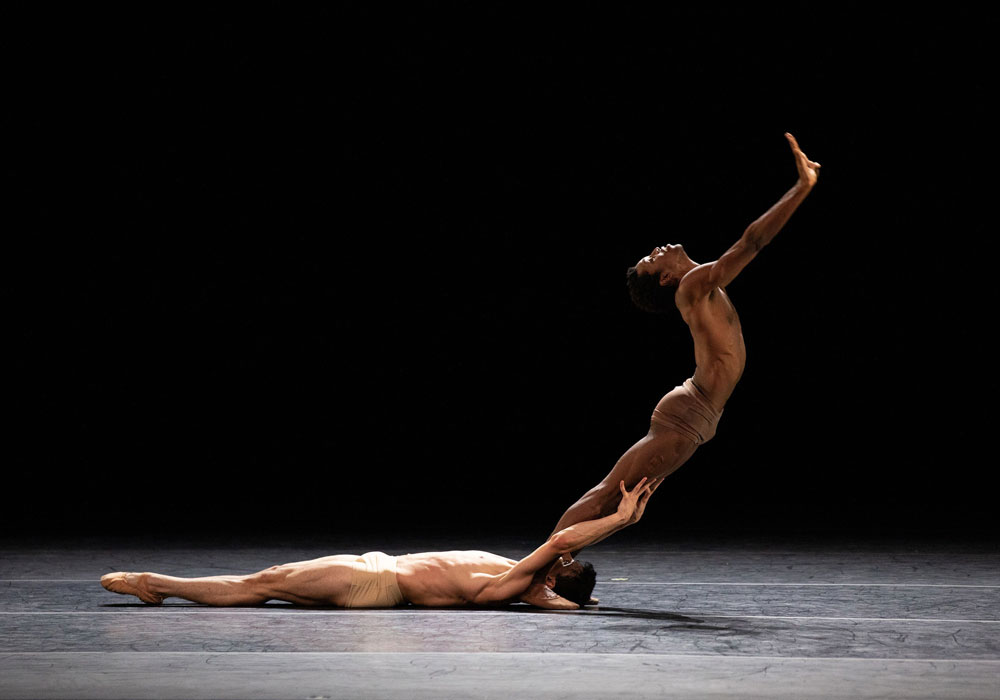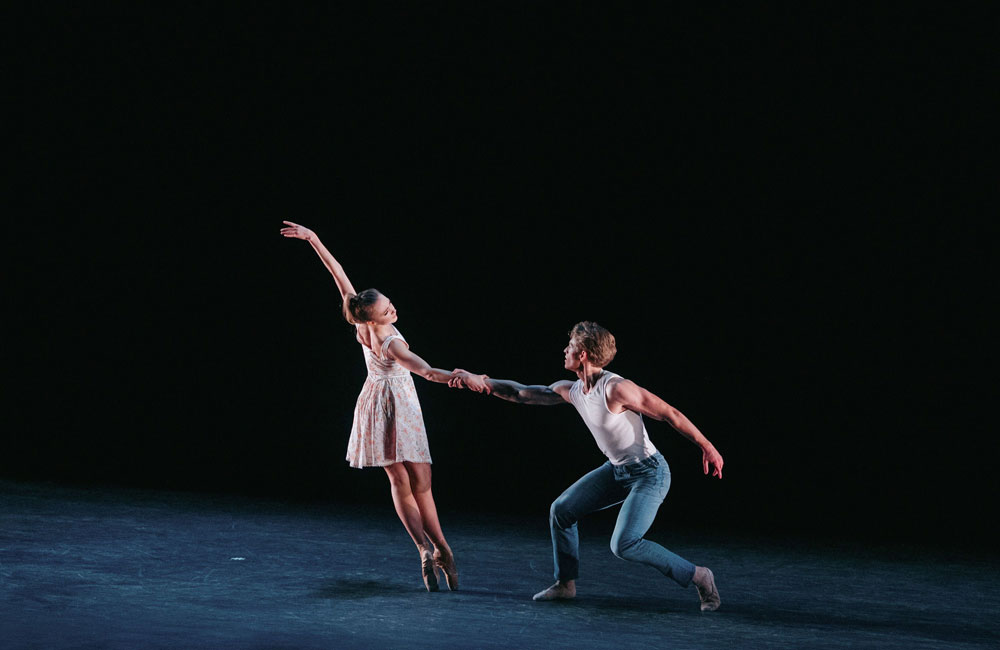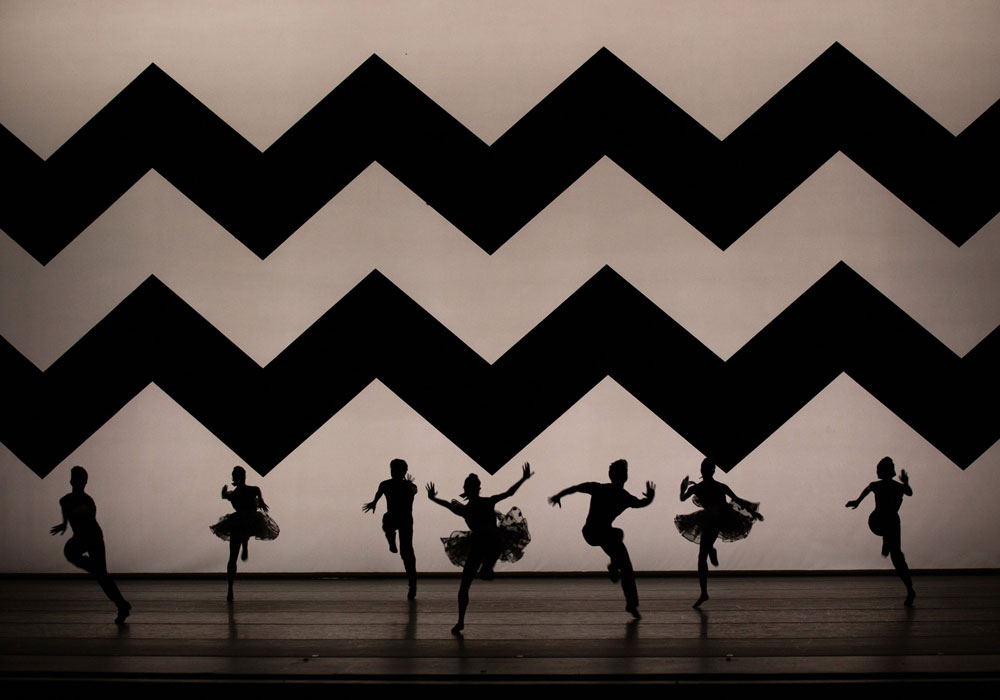
It’s difficult to resist the mystique and magnetism of ballet. The degree of physicality and control it demands of dancers places it on its own rarified plane. As one of the country’s foremost ballet companies, the American Ballet Theatre (ABT) represents an ideal example of how ballet is adapting to the present day. The company’s return to the Auditorium Theatre over the weekend showed how well it understands the taste of modern audiences and how faithfully it adheres to the dance form’s highest technical standards.
Even though rooted in folk traditions, the company’s first ballet Friday night would be its most formal. A suite of dances performed to live piano, Songs of Bukovina was a magic carpet ride to another world in a different time. Choreographed by Alexei Ratmansky, the dance opened with an idyllic look at pastoral life before the world became mechanized and complex. Born in St. Petersburg and a former principal dancer with the Ukrainian National Ballet, Ratmansky won a MacArthur Award in 2013 for the way his dance interpretations pay tribute to the past while embracing “modern sensibilities”. According to the award committee, his end impact has been to revitalize classical ballet. Light, pleasing and technically accomplished, Songs of Bukovina perfectly reflected the choreographer’s gift of bridging past and present. For 21st century audiences, the dance may have lacked that element of excitement they’ve come to anticipate, but it beautifully displayed the depth of the company’s technical capabilities.

Judging from Touché, the second piece of the evening, inclusion as well as modernity is a goal the company is actively pursuing. That the dance’s statement of recognition is being made by one of the pillars of the ballet community adds to its significance and importance. Other choreographers and dance companies have nudged the boundaries of where dances for two can go. The pas de deux in classical ballet is often theatrically dramatic as it portrays idealized notions of romance. Choreographed by Christopher Rudd, Touché goes much further and plunges into the realities of love. Realities that include feelings of hesitation, vulnerability and open desire. Danced by two men, Calvin Royal III and Joaõ Menegussi, it acknowledges how the attributes of physical attraction are blind to gender. A highly collaborative choreographer, Rudd says he approaches his art like a sculptor. Honesty seems the most potent characteristic he realizes with Touché. The simplicity and the purity of the dance’s story draws the audience in and touches emotions common to every human heart. To insure each movement and gesture, however subtle, conveys the dance’s intent; the skills of an intimacy director were enlisted to help guide and advise the dancers. While embracing concepts of contemporary dance, Touché was also vigilant to remain grounded in the tenets of classical ballet. Through his choreography, Rudd also exploited the muscular strength of the male physique to create a dance that’s as memorable for it execution as it is for its message. Awed by the dance’s power, the audience answered the genuineness of the piece with an immediate standing ovation.

Katherine Williams and Jarod Curley, both splendid dancers, answered Touche’s quiet activism with a more conventional take on pairing in Some Assembly Required. The late dancer-choreographer Clark Tippet designed the work around two friends, a married couple who were also professional dancers. With a playful eye and the sly insertion of challenging sequences, Some Assembly Required uses dance to show what trust and commitment look like in seasoned relationships. Created in 1989 and now considered a contemporary classic; the dance, like all of those presented that evening, blended ballet’s singular aesthetic into the sensibilities of today.

Although all beautifully performed, none of the previous dances matched the verve and energy of ZigZag, the explosion of movement closing the program. Danced exclusively to the mellow sound of Tony Bennett singing a trove of his classics; including a duet or two he’d recorded with Lady Gaga, the multi-chaptered Zigzag flew through a dazzling suite of jazz flecked arrangements. Visuals in the piece included projections of Bennett’s art work that amplified the dance’s cosmopolitan panache. Loaded with exceptional dance, it was particularly gratifying to see how well movements endemic to jazz were stitched into the choreography. Used as lightning quick embellishments to add nuanced flair, their addition helped make ZigZag a spectacle of joy.
American Ballet Theatre
April 14 – 16, 2023
Auditorium Theatre
50 East Ida B. Wells Drive
Chicago, IL 60605